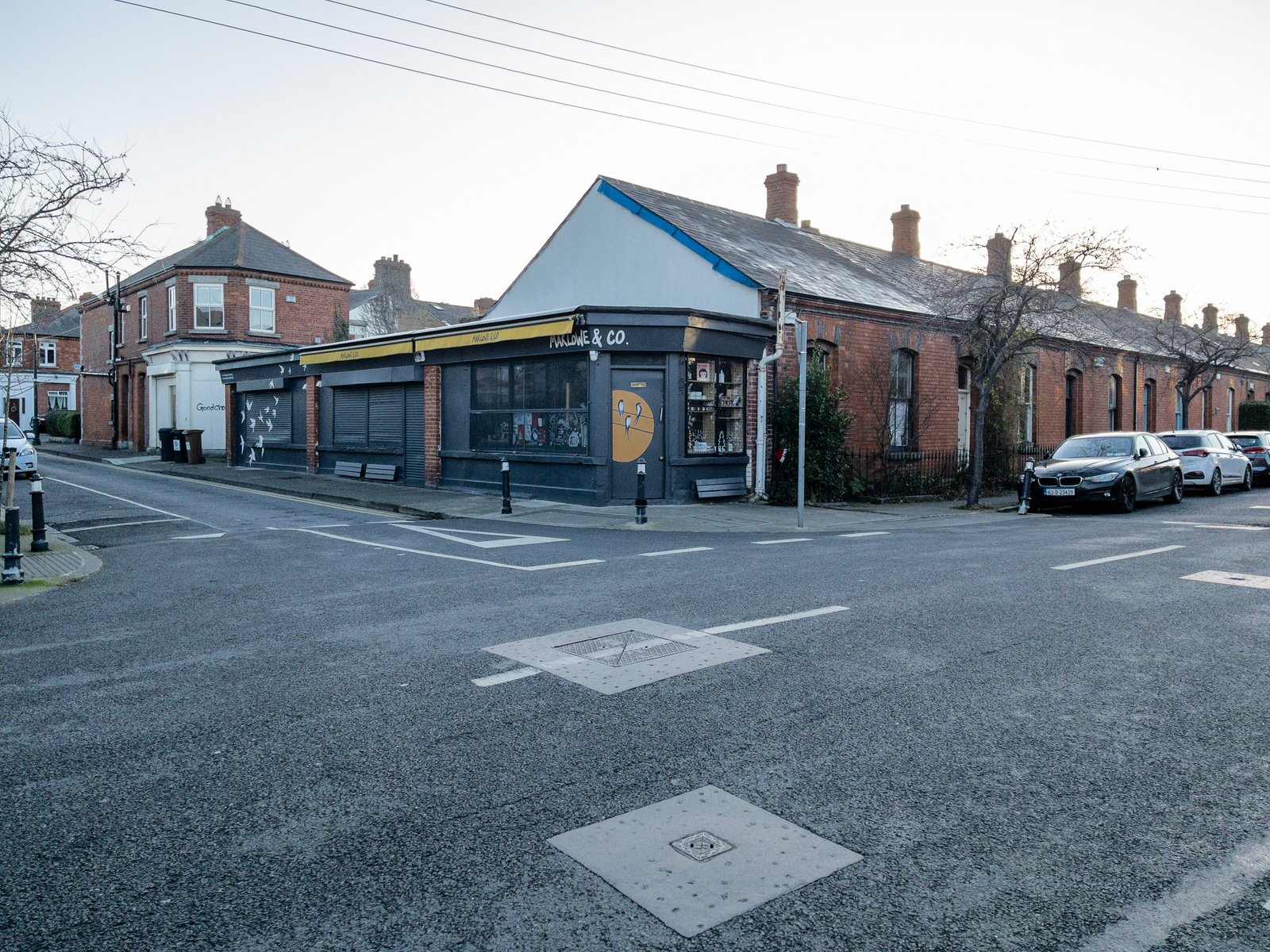O'CURRY ROAD - O'DONOVAN ROAD JUNCTIONTENTERS AREA
O'CURRY ROAD - O'DONOVAN ROAD JUNCTIONTHE TENTERS
O’Curry Road is named after Eugene O'Curry (20 November 1794 – 30 July 1862) was an Irish philologist and antiquary.
He was born at Doonaha, near Carrigaholt, County Clare, the son of Eoghan Ó Comhraí, a farmer, and his wife Cáit. Eoghan had spent some time as a travelling pedlar and had developed an interest in Irish folklore and music. Unusually for someone of his background, he appears to have been literate and he is known to have possessed a number of Irish manuscripts. It is likely that Eoghan was primarily responsible for his son's education.
Having spent some years working on his father's farm and as a school teacher, Eugene O'Curry moved to Limerick in c. 1824 and spent seven years working there at a mental hospital. He married Anne Broughton, daughter of John Broughton of Killaderry near Broadford, County Limerick on 3 October 1824. O'Curry was a supporter of Catholic Emancipation and in 1828 wrote a poem congratulating Daniel O'Connell on his election as an MP.
During this period O'Curry was establishing a reputation for his knowledge of the Irish language and Irish history, and, by 1834, was in correspondence with the antiquary John O'Donovan. He was employed, from 1835 to 1842, on O'Donovan's recommendation, in the topographical and historical section of the Irish Ordnance Survey. O'Donovan went on to marry O'Curry's sister-in-law, Mary Anne Broughton, in 1840. O'Curry spent much of the remainder of his life in Dublin and earned his living by translating and copying Irish manuscripts; the catalogue of Irish manuscripts in the British Museum (1849) was compiled by him for a fee of £100. O'Curry was responsible for the transcripts of Irish manuscripts from which O'Donovan edited The Annals of the Four Masters between 1848 and 1851.
In 1851 he was elected a member of the Royal Irish Academy and, on the founding of the Catholic University of Ireland in 1854, he was appointed professor of Irish history and archaeology.He worked with George Petrie on the Ancient Music of Ireland (1855). In 1852, he and O'Donovan proposed the Dictionary of the Irish Language, which was eventually begun by the Royal Irish Academy in 1913 and finally completed in 1976.
His lectures were published by the university in 1860, and give a better knowledge of Irish medieval literature than can be obtained from any other one source. Three other volumes of lectures were published posthumously, under the title On the Manners and Customs of the Ancient Irish (1873). His voluminous transcripts, notably eight huge volumes of ancient Irish law, testify to his unremitting industry. The Celtic Society, of the council of which he was a member, published two of his translations of medieval tales. He died of a heart attack, at his home in Dublin, on 30 July 1862, and was survived by two sons and two daughters. He is buried at Glasnevin cemetery, Dublin. O'Curry Road in the Tenters area of Dublin 8 is named in his honour. O'Curry GAA club on the Loop Head peninsula and O'Curry Street in Kilkee are also named after him.

Commercial DisclosurePLEASE NOTE THAT LINKS BELOW MAY REDIRECT YOU TO THE AMAZON LOCATION MOST LIKELY TO SHIP TO YOUR ADDRESS
You will find links to buy products from Amazon, Google and other partners. If you click on these links, you’ll find that the URL includes a small extra piece of text which identifies that the click came from my websites. This text is an affiliate code, and it means that I get a small percentage of the money you spend if you choose to buy that product, or, in some cases, other products from the site soon after. These affiliate links help pay the costs of producing my websites and ensure that the content is free to you.

Zeiss Batis 85mm f/1.8 Lens for Sony E Mount, Black
I HAVE THIS AND THE 135mm LENS
VERSATILE FULL-FRAME LENS: The powerful lens for the mirrorless full-frame system of Sony fulfills the highest requirements. Despite its compact design, the image meets the expectations of professional photographers. EXCELLENT RESOLUTION AND HIGH CONTRAST: Richly saturated and vivid colours are a must in the creation of lasting impressions. However, stray light within an optical system leads to a lightening of the image that is particularly noticeable in the shadows. This reduces image contrast, with the result that exposures lack contrast and appear faded. To avoid this, ZEISS combines various specially developed technologies to reduce the undesirable effects of stray light. ROBUST AND WEATHERPROOF METAL CONSTRUCTION: Thanks to features that are designed to keep out dust and spray water, the lens is perfectly suited for critical outdoor conditions. It is also designed for many years of intensive use. SMOOTH AND RELIABLE AUTOFOCUS: The design of the autofocus system requires an extremely accurate shifting of particular lens groups. The focusing system of ZEISS lenses is designed to ensure a robust and smooth-running autofocus mechanism with the best imaging performance.
YOU SHOULD ALSO CONSIDER THE 25mm LENS
